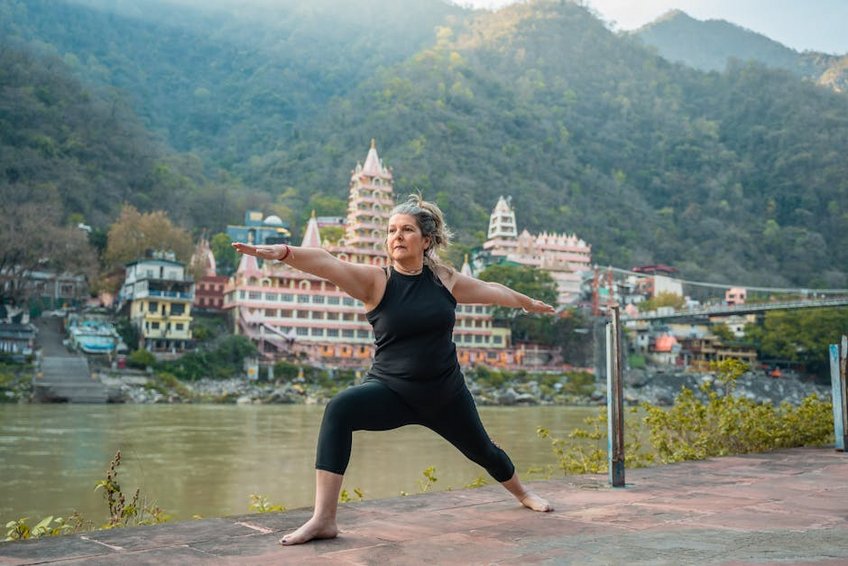Popular Yoga Ashrams in India: Your Ultimate Guide to Spiritual Retreats
Exploring popular yoga ashrams in India offers a transformative journey into the heart of spiritual practice and self-discovery. These sacred spaces, nestled in some of the most serene locations across the country, provide the perfect environment to deepen your yoga practice, learn meditation techniques, and immerse yourself in ancient Indian wisdom. Whether you’re a complete beginner or an experienced practitioner, spending time at one of India’s renowned ashrams can be a life-changing experience that connects you with like-minded seekers from around the world. The authentic ashram experience goes beyond just yoga classes – it encompasses daily routines, vegetarian meals, spiritual discourses, and community living that collectively create a powerful container for personal growth and transformation. Many popular yoga ashrams in India follow traditions established by legendary spiritual teachers, offering programs that range from weekend retreats to intensive month-long courses in yoga teacher training and spiritual development.
Popular Yoga Ashrams in India – Essential Information
Understanding what makes these spiritual retreat centers unique will help you choose the right ashram for your needs. Traditional Indian ashrams follow specific philosophical lineages and daily routines that might include early morning meditation, karma yoga (selfless service), satsang (spiritual discourse), and strict dietary guidelines. The experience varies significantly between ashrams – some focus on intense spiritual practice with minimal comforts, while others offer more modern amenities while maintaining authentic traditions. Most popular yoga ashrams in India require advance booking, especially during peak seasons, and have specific rules regarding dress code, silence periods, and participation in daily activities. It’s essential to research each ashram’s particular requirements and philosophy to ensure it aligns with your personal goals and comfort level.
What Defines an Authentic Ashram Experience
- Daily schedule typically begins before sunrise with meditation and includes multiple yoga sessions
- Simple vegetarian meals often served in community dining halls
- Opportunities for seva (selfless service) like cleaning or kitchen work
- Spiritual teachings based on specific yoga or meditation traditions
- Modest accommodation with basic amenities focusing on simplicity
- Budget options ($15-30 per day): Basic dormitory accommodation, shared bathrooms, simple vegetarian meals included
- Mid-range options ($30-80 per day): Private rooms with attached bathrooms, additional amenities, sometimes including yoga materials
- Luxury options ($80-200+ per day): Premium accommodations, specialized treatments, personalized guidance, often in more established ashrams
- Incredible India Official Tourism Website
- Yoga Journal – Ashram Reviews and Guides
Key Considerations Before Your Ashram Stay
Before committing to an ashram experience, consider your comfort level with shared accommodations, limited privacy, and structured daily routines. Many Western visitors find the adjustment to ashram life challenging initially, but most adapt within a few days. It’s important to research the specific rules of each ashram – some require complete silence during certain periods, while others have dress codes that mandate modest clothing. Budget accordingly, as costs can range from donation-based stays to premium packages costing several hundred dollars per week. Also consider the season – summer months can be extremely hot in many parts of India, while monsoon season might affect travel plans to remote ashram locations.
Popular Yoga Ashrams in India – Planning Your Trip
Planning your ashram retreat requires careful consideration of timing, budget, and personal goals. The best time to visit most ashrams in India is between October and March when the weather is pleasant across most regions. You’ll need to apply for an Indian tourist visa in advance, which typically allows stays of up to six months for US and EU passport holders. When budgeting, remember to account for international flights, domestic transportation to often remote ashram locations, travel insurance, and any additional expenses for side trips. Many ashrams offer different accommodation options ranging from basic dormitories to private rooms, with prices varying accordingly. It’s also wise to schedule some buffer time before and after your ashram stay to adjust to the time difference and explore nearby attractions.
Best Time to Visit Yoga Ashrams in India
The ideal time to visit popular yoga ashrams in India depends on both weather conditions and your personal schedule. October through March offers the most comfortable climate across most of India, with cooler temperatures and minimal rainfall. This period coincides with the tourist high season, so advance booking is essential. The summer months (April-June) can be extremely hot, especially in northern India, though ashrams in mountainous regions like Rishikesh remain pleasant. Monsoon season (July-September) brings heavy rains that might affect travel to remote ashrams but offers lush landscapes and fewer crowds. Many ashrams also host special events and festivals around major yoga dates like International Yoga Day (June 21) which can be particularly rewarding experiences.
Budget Planning and Costs for Ashram Stays
Essential Preparation Checklist
Preparing for your ashram stay involves both practical and mental preparation. Pack modest clothing that covers shoulders and knees, comfortable yoga attire, a reusable water bottle, mosquito repellent, and any necessary medications. Bring a journal for reflections and a flashlight for early morning sessions. Mentally prepare for digital detox as many ashrams discourage or prohibit phone and internet use. Inform family about limited communication options and set appropriate expectations. If you have dietary restrictions, communicate these in advance. Most importantly, approach the experience with an open mind and willingness to participate fully in the ashram’s daily routine and community activities.

Popular Yoga Ashrams in India – Top Retreat Centers and Experiences
India boasts numerous renowned ashrams, each with its unique character, teaching style, and spiritual focus. The most famous ashrams are often associated with specific yoga traditions or legendary teachers, offering authentic experiences that have attracted seekers for decades. From the Himalayan foothills of Rishikesh to the tropical shores of Kerala, each region offers distinct environments for spiritual practice. Some ashrams focus intensely on meditation and silence, while others emphasize physical yoga practice or devotional singing. Many Western visitors find that combining stays at multiple ashrams provides a more comprehensive understanding of India’s diverse spiritual landscape. The following sections highlight some of the most respected and popular yoga ashrams in India that have consistently provided transformative experiences for international visitors.
Must-See Highlights of Premier Ashrams
Among the most celebrated popular yoga ashrams in India, Parmarth Niketan in Rishikesh stands out for its massive scale and daily Ganga Aarti ceremony on the banks of the sacred Ganges River. The Sivananda Ashram network, with centers throughout India, offers a well-structured introduction to classical yoga with its famous “Five Points of Yoga” system. For those seeking intense meditation practice, the Vipassana centers following S.N. Goenka’s tradition provide profound 10-day silent retreats that have transformed countless lives. The Isha Yoga Center in Coimbatore, founded by Sadhguru, offers powerful yoga programs in a stunning setting at the foothills of the Velliangiri Mountains. Each of these ashrams provides distinct experiences that cater to different aspects of spiritual seeking and yoga practice.
Hidden Gems and Local Favorites
Beyond the well-known institutions, India hosts numerous smaller ashrams that offer intimate and authentic experiences. Anand Prakash Yoga Ashram in Rishikesh provides personalized attention with small group sizes and daily meditation practices. Swami Rama Sadhaka Grama near Rishikesh offers teachings in the Himalayan tradition with beautiful gardens and meditation halls. In South India, the Amritapuri Ashram of Mata Amritanandamayi (Amma) provides a unique cultural experience with its emphasis on selfless service and devotional practices. These less-commercialized ashrams often provide deeper connections with teachers and more opportunities for personal guidance. They typically maintain stronger adherence to traditional practices while being more flexible with international visitors’ needs.
Popular Yoga Ashrams in India – Practical Travel Information
Navigating travel to and between ashrams requires understanding India’s transportation systems and regional variations. Most international travelers arrive at major airports in Delhi, Mumbai, or Bengaluru, then take domestic flights, trains, or buses to reach their chosen ashram. Rishikesh, the yoga capital of India, is most accessible from Delhi (6-7 hour drive or train). South Indian ashrams are typically reached via Cochin, Bengaluru, or Chennai airports. Once in India, hiring a private driver for ashram transfers is often the most convenient option, though budget travelers can use India’s extensive train and bus networks. Accommodation at ashrams ranges from extremely basic to comfortable, with prices reflecting these differences. It’s advisable to book at least a month in advance for popular ashrams, especially during peak season from November to February.
| Transportation Type | Key Features | Approximate Cost (USD) |
|---|---|---|
| Domestic Flights | Fastest option for long distances, connects major cities | $50-150 per sector |
| Private Taxi | Door-to-door service, flexible timing, comfortable | $30-80 per day |
| Trains (AC Classes) | Comfortable, scenic, authentic Indian experience | $15-50 per journey |
| Public Buses | Most economical, connects smaller towns | $5-20 per journey |


